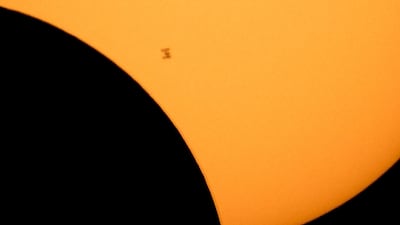The first total solar eclipse humans ever recorded was seen in the sky above modern-day Latakia, Syria, more than three millennia ago. “The Sun was put to shame,” a historian back then wrote, as the Moon obscured it entirely for two minutes and seven seconds, turning day into night.
This week began with enormous anticipation for another rendition of this unique celestial event. This time, it was seen over a large strip of North America and recorded by millions of people, generating an uncommon frenzy of popular interest in lunar movements. And it makes some sense, for those who take a long astronomical view of life, to cherish solar eclipses. The Moon’s distance from the Earth – and, by extension, its ability to block the Sun from our view – recedes by nearly 4cm a year. Consequently, astronomers note, in 600 million years or so, there will be no more such eclipses at all. Even for the more short-sighted among us, however, there is plenty of reason in the here and now to get excited about our relationship with space.
April 12, 1961, was the date of the first human space flight, and 63 years later humanity’s extra-planetary activity is booming. Only 10 members of our species are in orbit right now, aboard two space stations – the International Space Station (ISS) and China’s Tiangong Space Station – but their minimal footprint belies a surge in space-related investment from governments and the private sector alike. A report released on Monday by the World Economic Forum estimates that a decade from now the global space economy will be worth nearly $1.8 trillion, up from $1.1 trillion today.
The boom will be attributed to growing investment in everything from satellite communications to logistics, tourism, defence technology and civil space programmes. The Gulf’s own burgeoning space sector, with the help of international partnerships, is an active participant. On Tuesday, the UK Space Agency gave £1.4 million ($1.8 million) to a joint project between its Bahraini counterpart and a British university, aimed at using spacecraft to monitor carbon emissions in the Gulf. And on Thursday, a Spanish firm announced it is in talks with local regulators to set up a space tourism base in Saudi Arabia.
These developments come in the wake of a major announcement earlier this year that the UAE’s Mohammed bin Rashid Space Centre signed onto the Nasa-led Artemis programme, expected to be the first to return humans to the Moon in more than half a century. The UAE will provide an air lock for the mission’s Lunar Gateway station, the first permanent space station outside the Earth’s orbit.
On a planet reeling from two major armed conflicts and a host of others that make fewer front pages, it is striking that the World Economic Forum report pointed to “an increasingly connected world” as one of the most significant drivers of the global space industry. Continuing international co-operation of the kind that characterises the Middle East’s major space-related milestones is critical if our otherworldly pursuits are to escape the gravity of our mistakes at home.
And its successes beyond our atmosphere should be applied more to our suborbital woes. If the world can find so much common ground up there, then surely it can do so down here – if only to spare future historians viewing our time as one in which it was the Earth that was put to shame.


